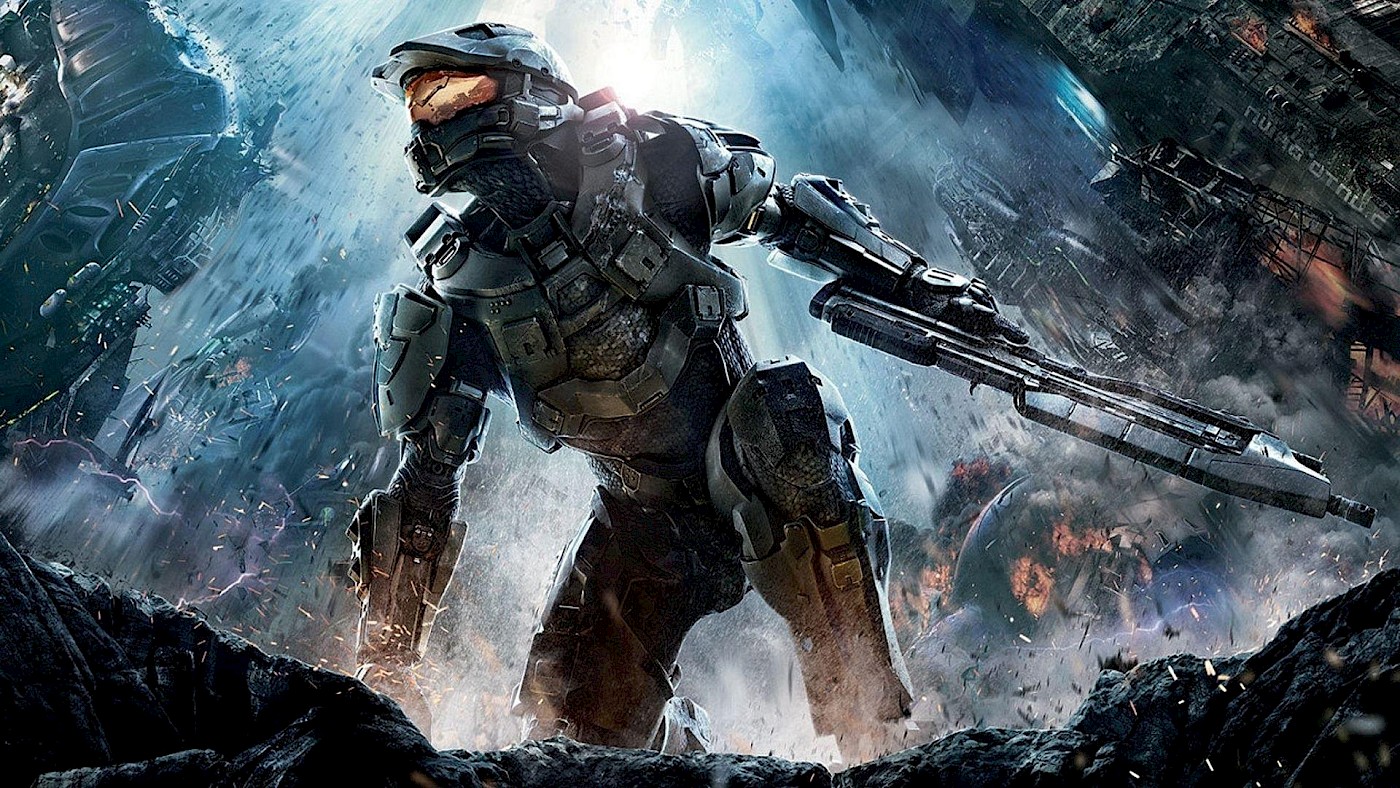During a recent sale, I picked up Halo: The Master Chief Collection on Steam. I have always had an interest in Halo, but as it was the Xbox flagship title, I never really got around to playing it except the PC version of the original game, released in 2003. I have also played the spinoff strategy games Halo Wars (2009) and its sequel (2017), as well as the smaller entries in the series, Halo: Spartan Assault (2013) and Halo: Spartan Strike (2015).
The Master Chief Collection consists of the first six games in the series, which all take place in the 26th century: Halo: Combat Evolved (2001), Halo 2 (2004), Halo 3 (2007), the side story Halo 3: ODST (2009; ODST stands for “Orbital Drop Shock Trooper”), the prequel Halo: Reach (2010), and finally Halo 4 (2012). Both the original Halo and Halo 2 are available in two versions: the original one and an Anniversary Edition with improved graphics, and you can seamlessly toggle between the two versions with the press of a button.
All of the games were developed by Bungie Studios until Halo 4, when production of the series shifted to 343 Industries, a Microsoft subsidiary. Bungie has since gone on to create the Destiny games, which are very different. Halo 5: Guardians (2017) was released as a console-exclusive, limited to the Xbox, but the sixth instalment, Halo: Infinite, will be released, after some delays, on both Xbox and PC (Steam) later this year.
For the benefit of those who may not be familiar with the series, the next section offers a brief overview of Halo. Then, I will turn to the meat of this article: a discussion of how history has served as an inspiration for the Halo series.
A brief introduction to Halo
The first Halo was a sensation back when it was released and helped sell Microsoft’s console, the original Xbox. It is a first-person shooter: you see the world from the perspective of the player character and interact with it mostly by shooting various ranged weapons. Halo has three main pillars to its design as far as combat is concerned: dedicated buttons allow you to shoot your weapon, throw grenades, and “melee” (strike) enemies.
The original Halo introduced many features that have since become standard in first-person shooters: regenerating shields (from Halo 2, health also regenerated), limiting the user to carry only two weapons (instead of a vast arsenal of weapons), slowing the pace of combat a little compared to PC games like the Doom and Quake series, mixing linear levels with more open spaces, seamless integration of vehicles and vehicular combat, and so on. Halo’s rich multiplayer experience ensured the game’s longevity long after most players had finished the campaign; its influence on online multiplayer games cannot be overstated.
Before Halo, first-person shooters were tricky to do on consoles because it’s generally easier to control a character using a keyboard for movement and the mouse for aiming. Halo solved this by incorporating a very intuitive auto-aim system that allows for precise aiming without ever feeling like it takes control of the player away. The pace was also slowed down a bit, with more emphasis on creating rich enemy encounters where positioning is key. Most enemies also don’t blindly rush at the player character, but instead interact with each other, dodge and roll to avoid getting hit, and so on.

Replaying all of the games, I find that the first Halo is a little uneven. The first four levels are amazing, especially the introduction of the Halo itself: a vast ring world constructed in space, with a terraformed surface on the inside of the ring. The level entitled “The Silent Cartographer”, which was used by the developers to test the game, features both interior spaces and open exterior areas; you walk around some parts and can jump in a vehicle to quickly traverse long distances. It’s all seamless and beautiful.
But once you hit the fifth level, “Assault on the Control Room”, the game loses its shine a little. The development of the first Halo had been fraught, with the game even changing genre a few times. The game started out as a real-time strategy game and was then turned into a third-person shooter. The developers eventually shifted perspective to first person for the final game. That the developers were running out of time becomes obvious from this point onwards as levels feature many copy-pasted rooms: “The Library” is almost unbearably monotone. “Two Betrayals” sees you run through much of the same copy-pasted rooms and hallways of the earlier “Assault on the Control Room”, even if the flying sections add some variety.
Although the second half of the game isn’t as good as the first half, Halo: Combat Evolved’s game mechanics are great. Its world-building is also good, with a fascinating setting and appealing art design; the music is deservedly well-loved by fans of the franchise. Of course, many elements from the game are inspired not just by the ancient world, but are taken from modern media, especially film and TV.
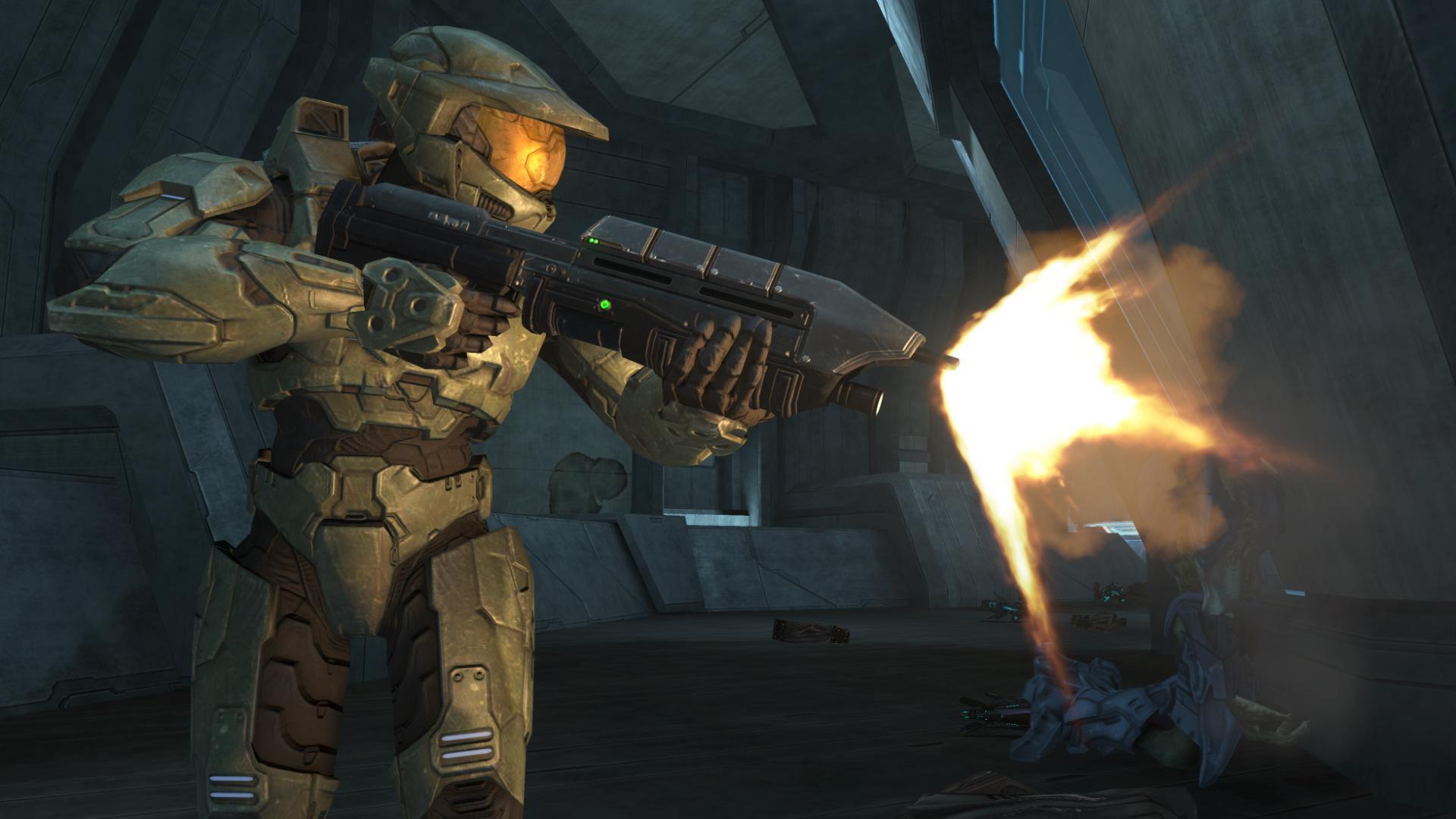
The Earth troops are clearly modelled after the Colonial Marines in the movie Aliens (1986), with the game’s sergeant Johnson very clearly based on the movie’s sergeant Apone. The dropships and the motion tracker (radar) in the bottom left corner may also have been taken from Aliens. The signature assault rifle was based on a weapon from the movie Starship Troopers (1997), as one of our patrons, Evan Schultheis, pointed out to me. Later games also take inspiration from the rebooted Battlestar Galactica (2003). And as a final example, the design of the lizard-like Elites, with their articulated mandibles, takes inspiration from the alien hunter who is ultimately defeated by Arnold Schwarzenegger in the movie Predator (1987).
Halo 2 is a bigger game with more variety, even if you sometimes get locked into a room and have to fight way too many waves of enemies before you are allowed to progress. On the plus side, you also get to play part of the game as a different character, which offers a change of pace as far as the story is concerned, even if it doesn’t affect the gameplay. Halo 2’s multiplayer is even better than the original and you can still find matches online.
Halo 2 is a good game, but I feel that all of the subsequent games are a lot better. And yes, that includes Halo 4, which some die-hard fans of the series dislike for various reasons, including the plot (which I thought was fine), some of the new enemy designs (which I really liked), and changes to game mechanics, such as giving all players the ability to sprint (which I also think is fine and doesn’t affect the game too much).
Halo and history
The player character in the mainline series of Halo games is named John-117, better known by his rank, Master Chief. He is a supersoldier created by combining genetic engineering with cybernetic enhancements. He stands 7 ft (213 cm) tall and uses an advanced powered exoskeleton suit that gives him durability, thanks to the armour and shields, as well as increased mobility.
Master Chief is assisted in his adventures by an AI named Cortana – a name familiar to anyone who uses Windows. Her character is just as big a part of the series as Master Chief, and she fulfills an important role in guiding him on his adventures. Cortana is usually represented as a hologram in the form of an apparently naked blue woman – one of the more dubious aspects of the Halo games, even if her nudity never gets commented on by any other characters.
Cortana’s initial design has her look more like a figure from the Tron movies. For the original game, her face is said to have been modelled after the portrait of the Egyptian queen Nefertiti (ca. 1370-1330 BC) that is currently in the Neues Museum in Berlin. As time went on and the graphical fidelity of the games increased, she became more and more sexualized, culminating with her design in Halo 4, where she is clearly made to appeal to the male gaze. While I don’t think there has been a big backlash with regards to her design, more recent instalments in the series have given her clothing or armour of some sort.
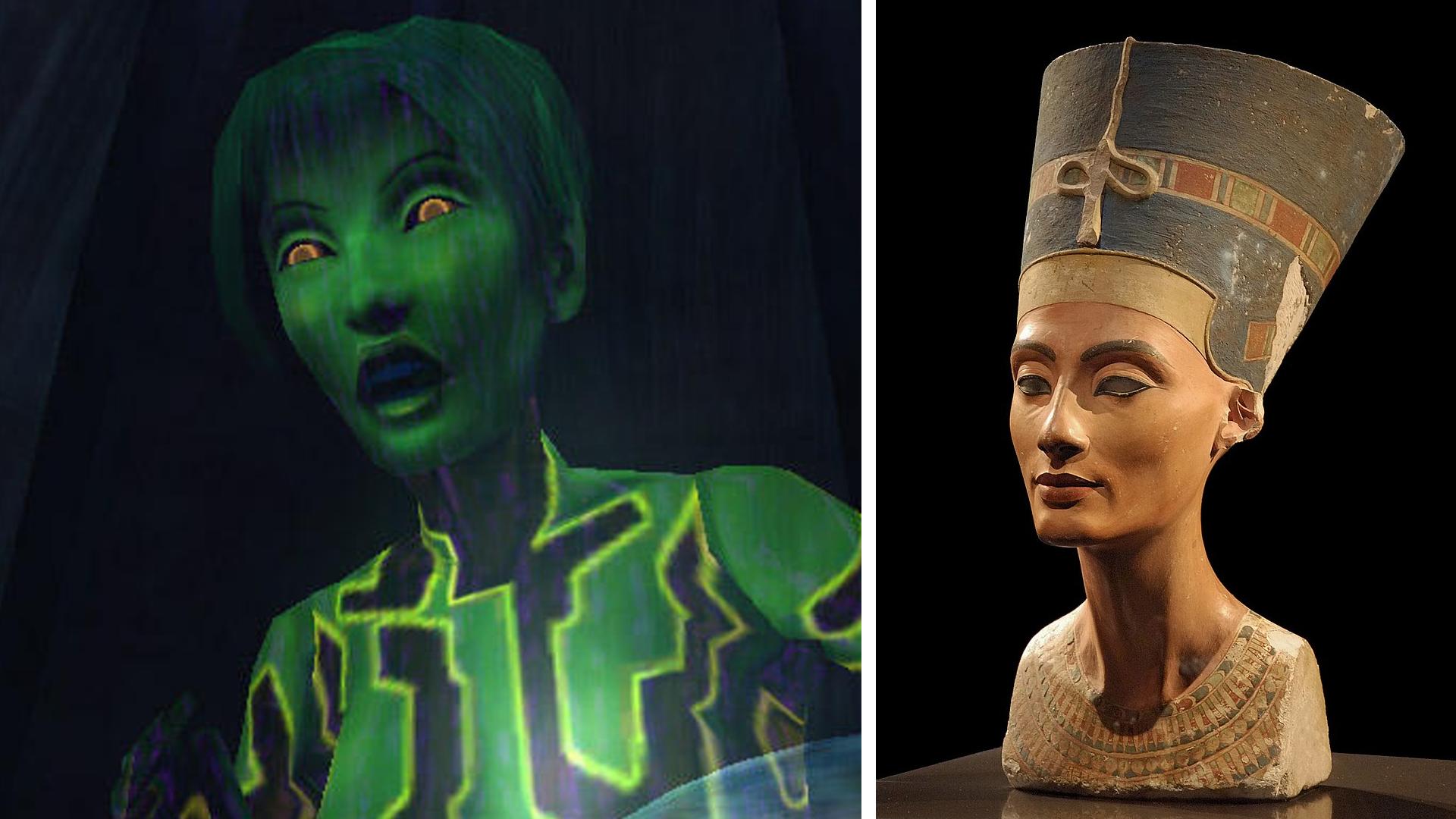
Supersoldiers like the Master Chief were created as part of Earth’s “Spartan” program, and are referred to in the game as “Spartans”. This is clearly a play on the notions that, among the ancient Greeks, the Spartans were thought to have been especially skilled in combat, and that they formed a warrior society. Readers of this website will know that these ideas are problematic, as explained by Roel Konijnendijk.
Still, there is a difference between perception and reality, and naming the Earth supersoldier program after ancient Sparta plays into the former rather than the latter. In ancient times, the Spartans were said to always use only as many words as necessary, hence our term “laconic” (after Lakonia, the region that Sparta dominated). In the game, Master Chief doesn’t say a lot; whenever he does speak, he is always laconic.
The Official Spartan Field Manual has a chapter entitled “The Spartan Way”, complete with an illustration of a Spartan that seems ripped directly from 300. The book explains (p. 19):
The shield and the spear form the basis of Spartan-IV strategy. As the Shield of the UEG [United Earth Government], it is your sworn duty to defend civilians from hostile belligerents, alien or domestic, without hesitation. As the UNSC [United Earth Space Command]’s Spear, your military skill should be employed with absolute precision until the last enemy falls. Make these Spartans proud, recruits.
Weirdly, the powered assault armour worn by the Spartans has the designation Mjölnir, named after the hammer used by the Norse god Thor.
In the first game, you spend the first few levels fighting an alien empire known as the Covenant. They are very different from the forces fielded as part of the “United Nations Space Command” (UNSC) army. Unlike the human forces, the Covenant troops consist of a number of different alien species, each of which has a descriptive English designation. They include the large and nimble lizard-like Elites, the smaller cannon-fodder troops known as the Grunts, and the slender Jackals, who defend choke points while wielding large, round shields; some Jackals use sniper rifles to defend an approach.
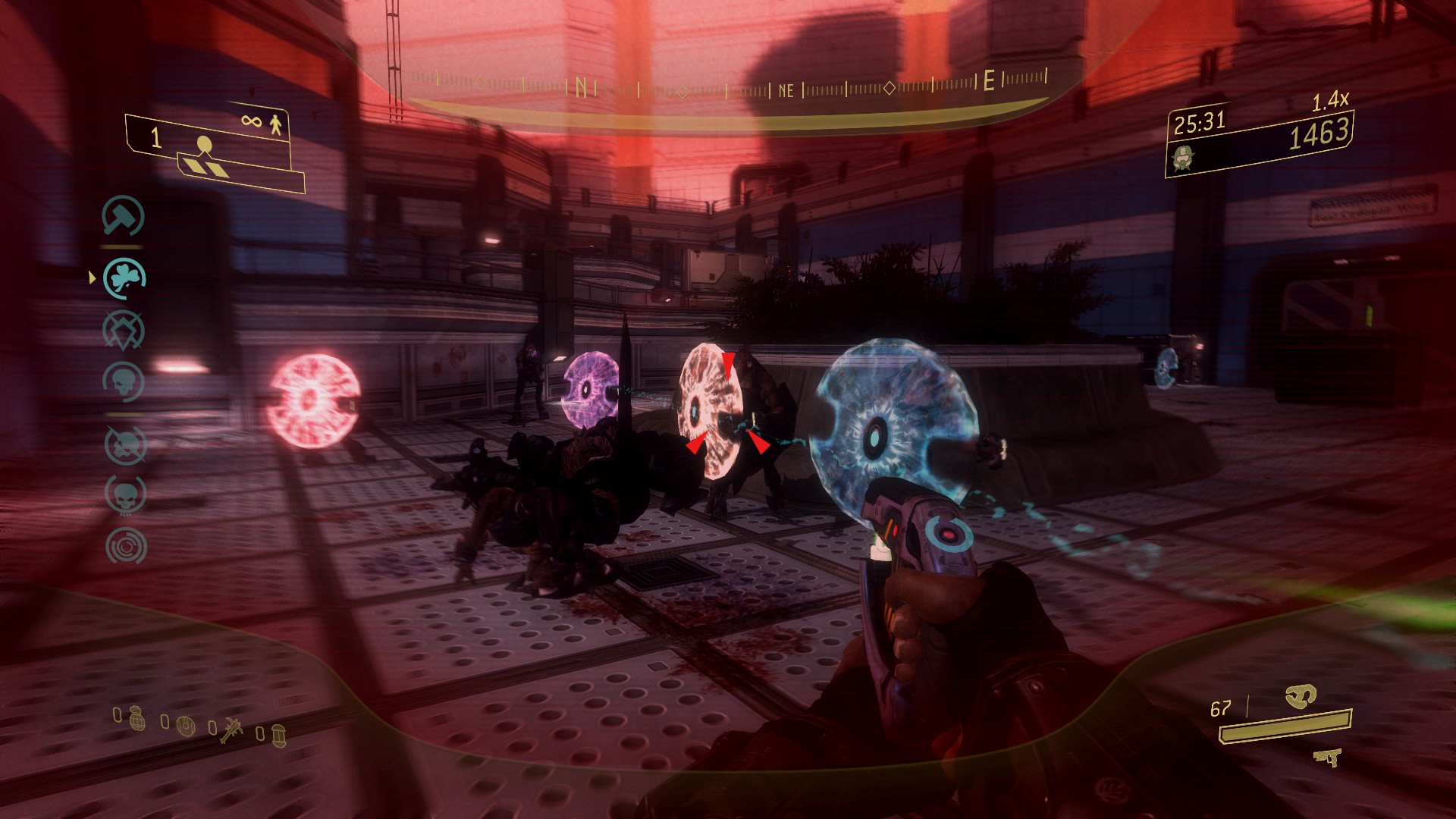
There are interesting parallels between the initial setup in Halo and the ancient world, in particular the conflict between the Greeks and the Persians in the early fifth century BC. If Earth represents the Greeks, then the Covenant seems to represent the Persian Empire. Earth is outnumbered and on the defensive; the Covenant is enormous and is depicted as an aggressive invader.
The Persian Empire encompassed a huge part of the ancient world and was thus the home of many different peoples, each having their own language and customs. When the Persians launched their punitive expeditions against the Greek mainland, many city-states banded together to try and present some opposition to the attacker. (Halo Legends, a collection of short films released in 2010, notes that humanity only united when faced by the Covenant.)
Famous among the many battles of the Greco-Persian Wars is the one fought at Thermopylae (480 BC). Here, a small force of Greeks, led by the Spartans, made a stand and were defeated by the Persians: the same basic idea, featuring a heroic defeat, was used as the plot for the original Halo’s prequel, Halo: Reach (2010). Thermopylae is mentioned specifically in the Official Spartan Field Manual (p. 19), which refers to the 300 Spartans, but conveniently omits their allies from the narrative.
The developers of the Halo have sprinkled references to the ancient world throughout their work (e.g. Project: Orion, ONI Acrisius, Corbulo Academy of Military Science, the planet Genesis). Furthermore, Bungie Studios previously developed a series of first-person shooters in the 1990s named after the main spaceship in that universe: Marathon. The vessel’s name refers to the battle in 490 BC, during which the Athenians defeated the Persians. Halo is in many ways a spiritual successor to Marathon, with even more overt references to the ancient world and especially ancient Greece.
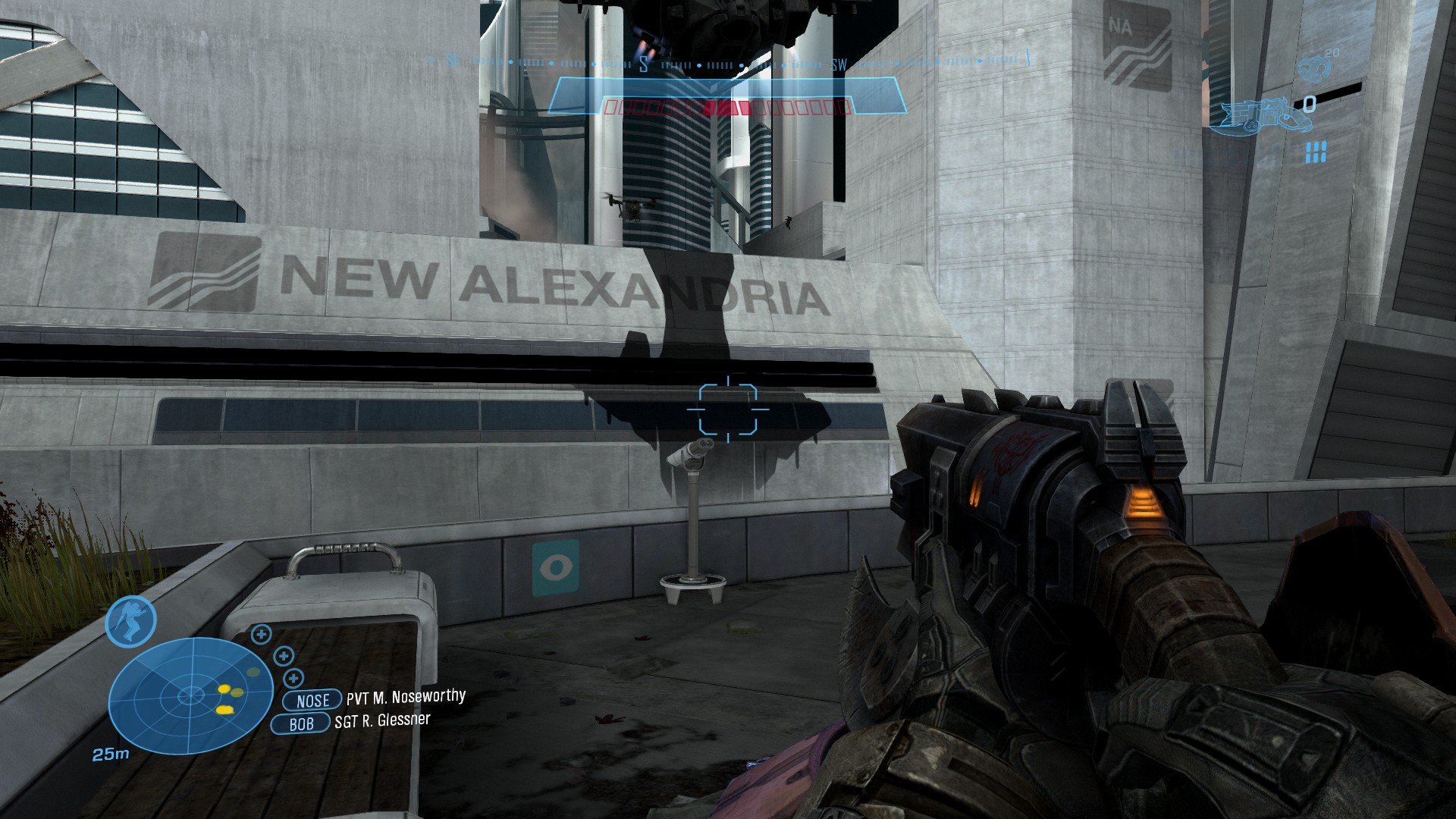
As the series progressed, more and more of the backstory was fleshed out. In Halo 4, we learn that humanity had, long ago, spread across the stars. They eventually came across the Forerunners, an ancient species, who believed that the humans were trying to invade them. On closer examination, however, it turned out that the humans were actually on the run, trying to flee and fend off a parasitical alien species referred to as the Flood.
The concept of apparent invaders turning out to be simply fleeing something else themselves has parallels in certain ideas about both the end of the Bronze Age and the end of the Roman Empire in the west, involving the (supposed) mass movement of people. Around 1200 BC, the so-called “Sea Peoples” (a modern term) attacked Egypt; we don’t know exactly where they came from. Some scholars suggest that they had been displaced at home and were looking for another place to settle – a notion that can be, and indeed has been, abused to paint refugees as dangerous. The reality is likely to have been more complex, but it’s again the concept here that may have served as inspiration.
The Flood – whose name evokes something biblical – are first introduced about halfway through the first Halo game. The Flood always attack in large numbers and swell their ranks by reanimating the corpses of their defeated enemies. The name fits considering how they wash over whatever might be in their way. Unlike the Covenant, their actions are limited: they either try to rush your position or they shoot from a distance. They are not very interesting to play against as a result, but they are interesting conceptually, even if they seem to be more than a little inspired by StarCraft’s Zerg, which, in turn, are inspired by the Tyrannids from the Warhammer 40K games. (Evan Schultheis suggested to me that the Flood are taken from Christopher Rawley’s Vang series of novels.)
In the original Halo, you eventually learn that every Halo forms part of a larger “Halo Array”, created by the Forerunners as a weapon to extinguish all life in the galaxy. Why? The Forerunners believed that the Flood could not be defeated using conventional means. By killing off all life, they hoped to starve the Flood to extinction. The Halos are built in a gigantic installation referred to as the Ark – another biblical reference. The name fits as genetic samples of all organisms are stored here; these can be used to seed the galaxy with life once the threat has been neutralized.

In Halo 4, you learn a great deal more about the Forerunners, who have all gone extinct except for one of their number, who had been imprisoned. He is referred to as the Didact (i.e. who teaches, instructs), and he commands an army of “Prometheans”, named after the ancient Greek Titan, Prometheus. Incidentally, these Prometheans are a lot more interesting to fight in the game than the Flood are, as they work together and behave intelligently, like the Covenant.
The Prometheans are constructs, but I won’t write more so as to not spoil the twist that is revealed later in Halo 4. What is interesting to point out here, is that these Prometheans were the highest rank of warrior-servants in the Forerunner empire, which in Halo is referred to by another word derived from Greek: ecumene. The ancient Greeks used the word οἰκουμένη to refer to the known world. (Matthew Lloyd points out that the use of the term in Halo may also be a reference to the work of Ursula K. Le Guin, whose galaxy-spanning federation is known as the Ekumen.)
Closing remarks
The Halo games take place in the distant future of the 26th century. But the story takes clear inspiration from history, most notably in its juxtaposition of the UNSC and its Spartans with the Persian Empire-inspired Covenant. Various other details highlight how the developers reference history to give the world of Halo some historical heft and to make the distant future seem more familiar.
Whenever someone argues that history or archaeology don’t have a practical use in modern society, unlike, say, the natural sciences or medicine, I am always a little baffled. These disciplines do have “practical uses”, however defined. Both history and archaeology contribute a great deal to our modern world from cultural, political, and economic points of view.
I won’t list all of these factors in detail, especially since many of them have been touched upon in other articles, including political aspects. But to focus briefly on the economical side, which seems so often to dominate the discourse with regards to whether the humanities are “useful”. History and archaeology do contribute meaningfully to our economy. Universities, museums, and libraries employ countless professionals all over the world, and many of them also generate money. Living history museums, renaissance fairs, reenactors, and more further contribute to society, including our economies, in important ways.
From a cultural point of view, the various articles in this series – among many others! – highlight how history and archaeology can serve and indeed have served as sources of inspiration for literature, film, television, and games. And all of these different media not only contribute to our society economically, but they also help further ideas in political discourse. For example, the increase in female protagonists in video games – sadly not in Halo’s case! – reflect increased equality in our own society.
In short, Halo is a great series of games that are well worth playing. Knowledge about the past will greatly enhance your experience of the games. If you have the chance, I thoroughly recommend you play through Halo: The Master Chief Collection yourself.
Corrections
My thanks to Evan Schultheis, who corrected my statement that Halo’s MA37 assault rifle was based on the pulse rifle from Aliens, when instead it appears to have been adapted from the Morita II assault rifle from Starship Troopers. He also suggests that the idea of the Halo Array and the Flood were taken from Christopher Rawley’s Vang series of novels, which I have not read. In addition, Evan notes that there are even more references to the ancient world to be found in the Halo novels.
Further reading
It’s a pity that many behind-the-scenes books don’t really go into much detail with regards to sources of inspiration. Perhaps this is out of fear for not seeming original, or wanting to avoid getting sued (e.g. referencing the movie Aliens)?
Regardless, the following books are recommend if you like the series:
- Paul Davies, Awakening: The Art of Halo 4 (2012).
- Jeff Easterling, Jeremy Patenaude, and Kenneth Peters, Halo Mythos: A Guide to the Story of Halo (2016).
- Kenneth Peters, Halo Warfleet: An Illustrated Guide to the Spacecraft of Halo (2017).
- Kenneth Peters and Kiel Phegley, Halo: Official Spartan Field Manual (2018).
- Martin Robinson, Halo: The Art of Building Worlds (2011).
